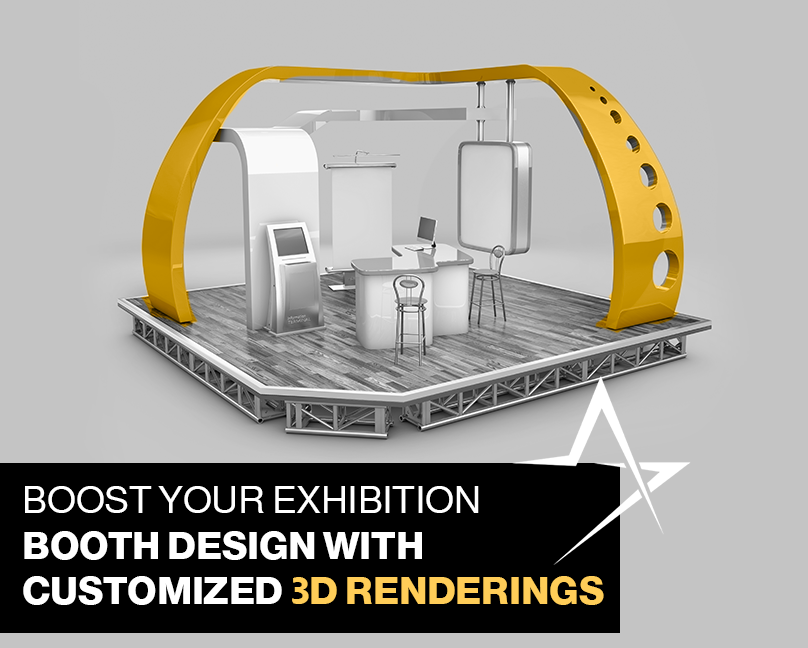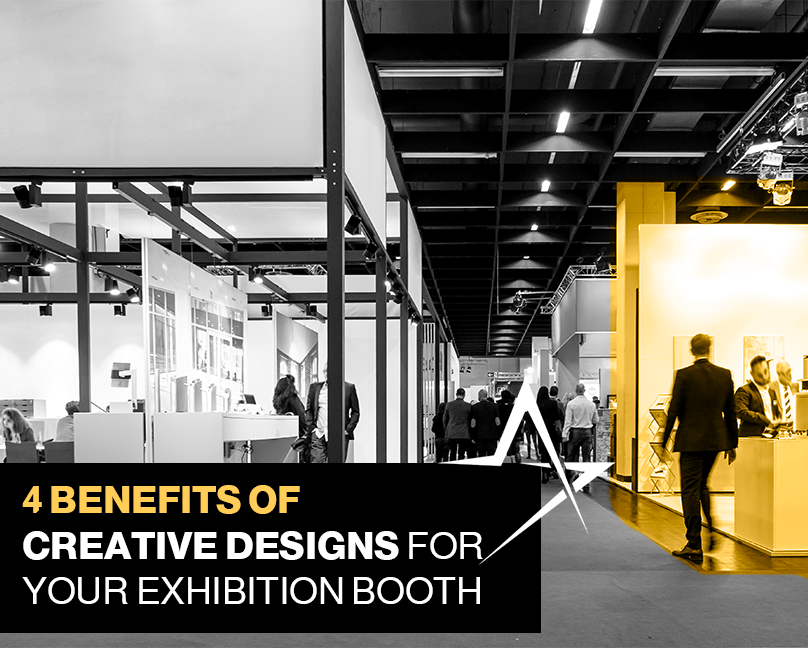Using 3D design is considered one of the most important parts of your exhibition booth, and its planning determines what it will look like.
The 3D booth design mainly focuses on grabbing your audience’s attention, engaging with you, and generating buzz for your company with its customized, unique layout according to your business identity.
What are 3D renderings?
3D renderings are digital images or animations created using computer software to simulate a three-dimensional environment. These renderings are often used in various industries, including architecture, product design, gaming, and exhibition booth design.
Why are 3D renderings important for your exhibition booth design?
Wide visualization
3D renderings provide a realistic and detailed visualization of the exhibition booth before it is physically constructed and how the booth will look in a simulated environment.
Prevent any costly mistakes
By visualizing the booth in 3D, you can identify potential design flaws or issues early in the planning stages to prevent costly mistakes that might arise in the future.
Client approval
The client’s review of the 3D renderings ensures that the design aligns with their expectations and requirements, reducing the likelihood of misunderstandings.
Realistic lighting and textures
The inclusion of realistic lighting and textures in 3D renderings provides a more accurate representation of how the booth will look under different conditions.
Key considerations for 3D exhibition booth design
Designing a 3D exhibition booth requires careful planning and consideration to ensure that it effectively communicates your brand message, attracts visitors, and meets your objectives.
Here are key considerations for 3D exhibition booth design:
1# Understand your goals
Clearly define your objectives for participating in the exhibition, whether it’s to generate leads, showcase new products, or build brand awareness.
2# Brand identity
Ensure that the booth design aligns with your brand identity by using colors, logos, and overall aesthetics, which helps reinforce brand recognition.
3# Visitor Flow
Plan the layout to facilitate a smooth flow of visitors through the booth and how attendees will enter, move through, and exit the space, and ensure that your booth is accessible to all attendees.
4# Functional Zones
Divide the booth into functional zones based on the activities you plan to host, which may include areas for product displays, demonstrations, meetings, and interactive experiences.
5# Technology Integration
Incorporate technology for more interaction with visitors, which may include interactive displays, touchscreen kiosks, virtual reality experiences, and digital presentations.
6# Branded Graphics and Signage
Use high-quality graphics and signage to communicate key messages and information, making sure that text is clear and readable from a distance, and include eye-catching visuals to grab attention.
7# Lighting Design
Thoughtfully plan the lighting to highlight key areas, create a visually appealing atmosphere, enhance the overall aesthetic, and draw attention to specific products or features.
8# Compliance and Regulations
Familiarize yourself with the event venue’s regulations and guidelines, so ensure that your booth design complies with safety standards, fire codes, and any other requirements set by the exhibition organizers.
How can you boost your exhibition booth design with customized 3D renderings?
Customized 3D renderings allow for a more immersive and interactive experience in your exhibition booth design, giving potential clients a clearer understanding of your brand and products and engaging them more.
Here are some ways you can boost your exhibition booth design with customized 3D renderings:
Make it more real
3D renderings allow you to showcase your booth design with a high level of realism and detail.
Align it with your brand identity
Consistency is key to creating a memorable brand presence, so ensure that the 3D renderings align with your brand’s visual identity, including colors, logos, and overall aesthetics.
Using interactive elements and presentations
Consider incorporating interactive elements into your 3D renderings, such as touchpoints, screens, or other interactive features that engage visitors and make your booth stand out.
You can also showcase different views, angles, and configurations of your booth to highlight its versatility and adaptability to various spaces by using dynamic presentations.
Using VR or AR technologies
You can use virtual reality (VR) or augmented reality (AR) technologies to provide an unforgetable and unique experience that allows visitors to virtually “walk through” your booth.
Highlight key products or services
Use 3D renderings to emphasize your key products or services within the booth, which can include placing them in prominent positions or creating dedicated display areas for maximum visibility.
Using before-and-after comparisons
If your booth has undergone changes or improvements, you can consider creating before-and-after 3D renderings to more effectively demonstrate the evolution of your booth design.
Sharing social media teasers
Share sneak peeks and teasers of your exhibition booth on social media platforms using 3D renderings to generate excitement and anticipation among your audience leading up to the event.
At Fame, our experienced team will help you every step of the way until you find the perfect design that suits your exhibit booth.
Through the design process, our designer will focus on the space, size of monitors and other technical stuff, and brand identity.
For more information, feel free to contact us, because we’d be delighted to design your next 3D booth.





